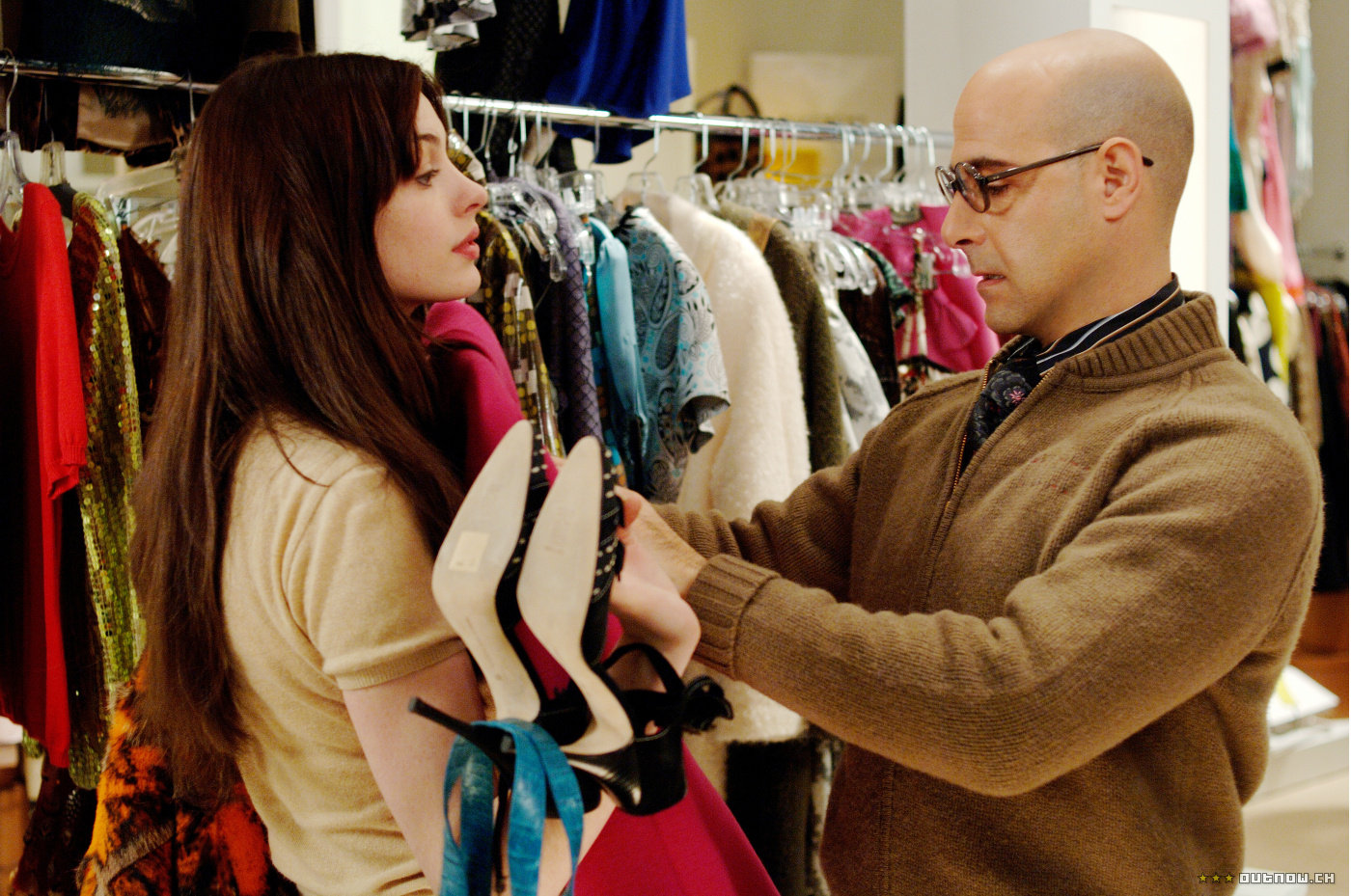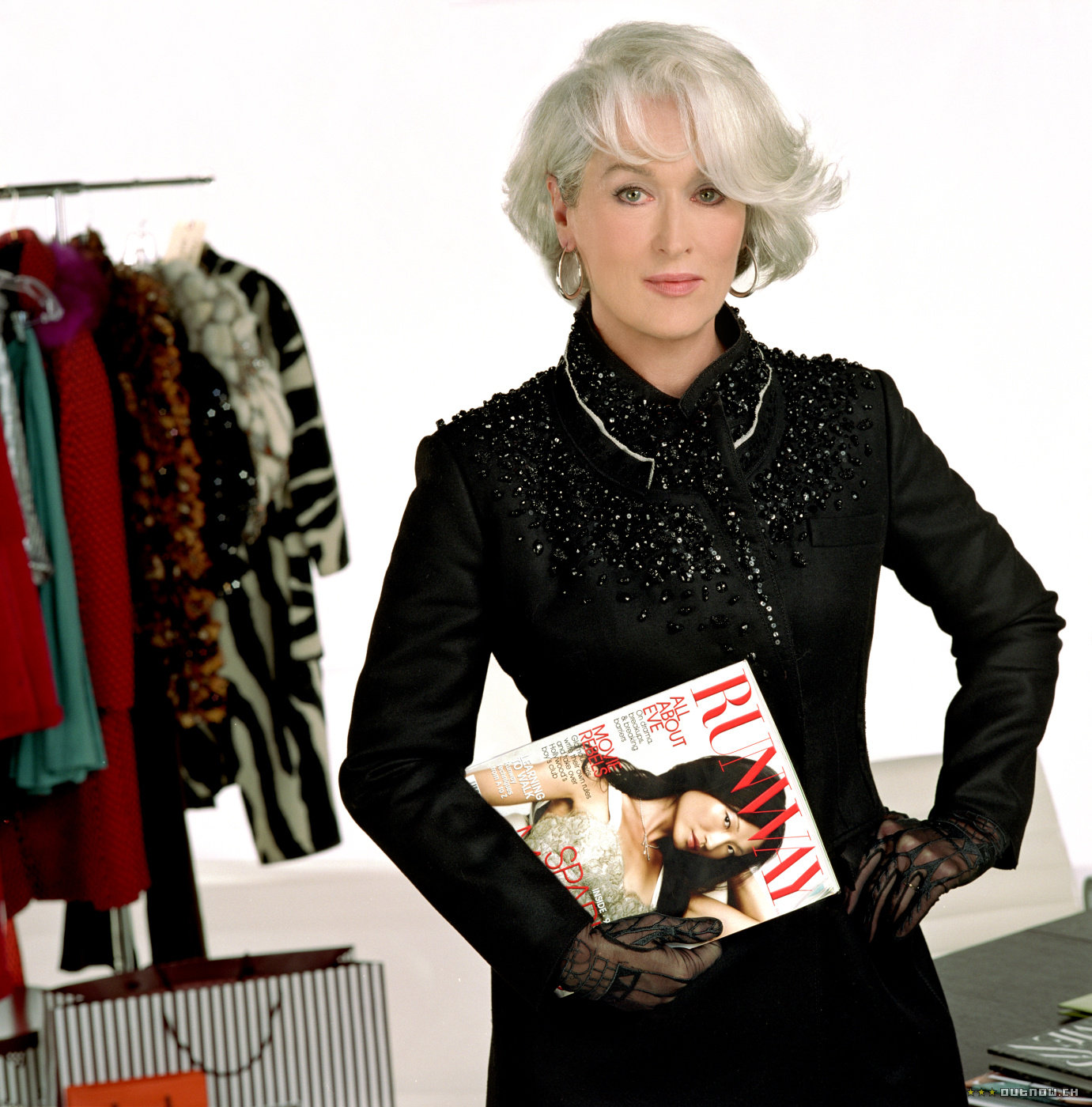In the film The Devil Wears Prada, Andrea Sachs works as an assistant for
Miranda Priestly, the executive of Runway fashion magazine in New York City.
She finds herself being an outsider because she does not have a sense of
fashion and is not concerned about looking like the models in the magazines. In
order to keep her job, she realizes that she has to start to care about what
the people she is working with are passionate about. Andrea changes her
attitude and behavior so that she can be successful in her job as an assistant.
Runway fashion magazine’s office in New York City makes arguments about the
film’s society, culture, time period, tone, and mood through the appeals of
ethos, pathos, and logos.
Through the argument of ethos, the Runway
magazine office being very modern and professional looking shows the importance
of the fashion industry. All of the employees in the Runway magazine office are
dressed stylish and in high-end designer brand names. They are extremely
knowledgeable about the current trends in fashion, as well as with business
strategies. It is mentioned several times throughout the film how any girl
would die to have the job that Andrea has as an assistant to Miranda. This
shows the argument that most girls are passionate about fashion and self image
during this time period. The Runway magazine features models all having similar
images of being thin and is the most popular magazine at the time. Nigel, one
of the stylists, mentions how the magazine is so powerful that it even gives
gay boys that are afraid to show their sexuality hope that they can one day
participate in something as brilliant as Runway. By having Runway magazine’s
office and the employees so contemporary and qualified, the fashion industry,
which is the main focus of the film, gains credibility.
 The audience connects with the
protagonist of the film, Andrea, when she is an outcast at work because of her
lack of knowledge in fashion. Miranda treats all of her workers with harshness
and does not tolerate any slack. Andrea finds herself conforming to the fashion
culture because of the pressures of the environment she is constantly in. She
realizes that she has to become trendy and fashionable in order to get the
acceptance of Miranda and her other coworkers. The audience can see that Andrea
changes because she is tired of feeling like she cannot rise in her position at
work due to her self-image. Andrea’s attitude transforms once she changes her
clothes and goes through an entire makeover. This is shown through the argument
of pathos and the feelings that arise in the audience while seeing her go from
being a complete outsider to accepted and fashionable. Andrea’s “good looks and
sex appeal are compelling traits, predisposing us in favor of a given
character” (Giannetti 406).
The audience connects with the
protagonist of the film, Andrea, when she is an outcast at work because of her
lack of knowledge in fashion. Miranda treats all of her workers with harshness
and does not tolerate any slack. Andrea finds herself conforming to the fashion
culture because of the pressures of the environment she is constantly in. She
realizes that she has to become trendy and fashionable in order to get the
acceptance of Miranda and her other coworkers. The audience can see that Andrea
changes because she is tired of feeling like she cannot rise in her position at
work due to her self-image. Andrea’s attitude transforms once she changes her
clothes and goes through an entire makeover. This is shown through the argument
of pathos and the feelings that arise in the audience while seeing her go from
being a complete outsider to accepted and fashionable. Andrea’s “good looks and
sex appeal are compelling traits, predisposing us in favor of a given
character” (Giannetti 406).  The
Devil Wears Prada empowers women and their place in the work field through
the argument of logos. A woman is the top editor of Runway magazine and is
responsible for assigning everyone his or her jobs. Most of the other employees
at Runway, including Andrea, are women. This shows how more and more women are able
to hold high positions in the work field in today’s society. The argument that
women have power in the work field is an assumption “based on shared values
derived from culture and history” (Lunsford 87). All of the people working at
Runway Magazine wear designer brand clothing that are recognizable to the
film’s audience. “Brand-name products and logos realistically reflect the
landscape of everyday American life” (Smith 2). By having the characters wear
identifiable clothing brands, the audience can distinguish logically that the
clothes are extremely expensive and that the characters wearing these clothes
are passionate about fashion and keeping up with the different trends.
The
Devil Wears Prada empowers women and their place in the work field through
the argument of logos. A woman is the top editor of Runway magazine and is
responsible for assigning everyone his or her jobs. Most of the other employees
at Runway, including Andrea, are women. This shows how more and more women are able
to hold high positions in the work field in today’s society. The argument that
women have power in the work field is an assumption “based on shared values
derived from culture and history” (Lunsford 87). All of the people working at
Runway Magazine wear designer brand clothing that are recognizable to the
film’s audience. “Brand-name products and logos realistically reflect the
landscape of everyday American life” (Smith 2). By having the characters wear
identifiable clothing brands, the audience can distinguish logically that the
clothes are extremely expensive and that the characters wearing these clothes
are passionate about fashion and keeping up with the different trends.
The argument of ethos is used to
establish the credibility of Runway magazine and the fashion industry as a
whole. It shows how pertinent fashion is in today’s society. The influence of
fashion is shown through the appeal of pathos. The audience’s emotions are
triggered when seeing Andrea’s change in her values, behavior, social skills,
and self-image in order to be accepted in the fashion culture. The empowerment
of women in the work field is shown through logos. By having recognizable,
high-end clothing brand names worn by all of the people at Runway, the audience
sees how important people in the fashion industry value clothes and appearance.
I rate the main setting of this movie with four slurpees because it does an
excellent job at capturing arguments about the film’s society, culture, time
period, tone, and mood. It presents these arguments effectively through the use
of ethos, pathos, and logos in showing the audience the norms in the fashion
industry.

No comments:
Post a Comment